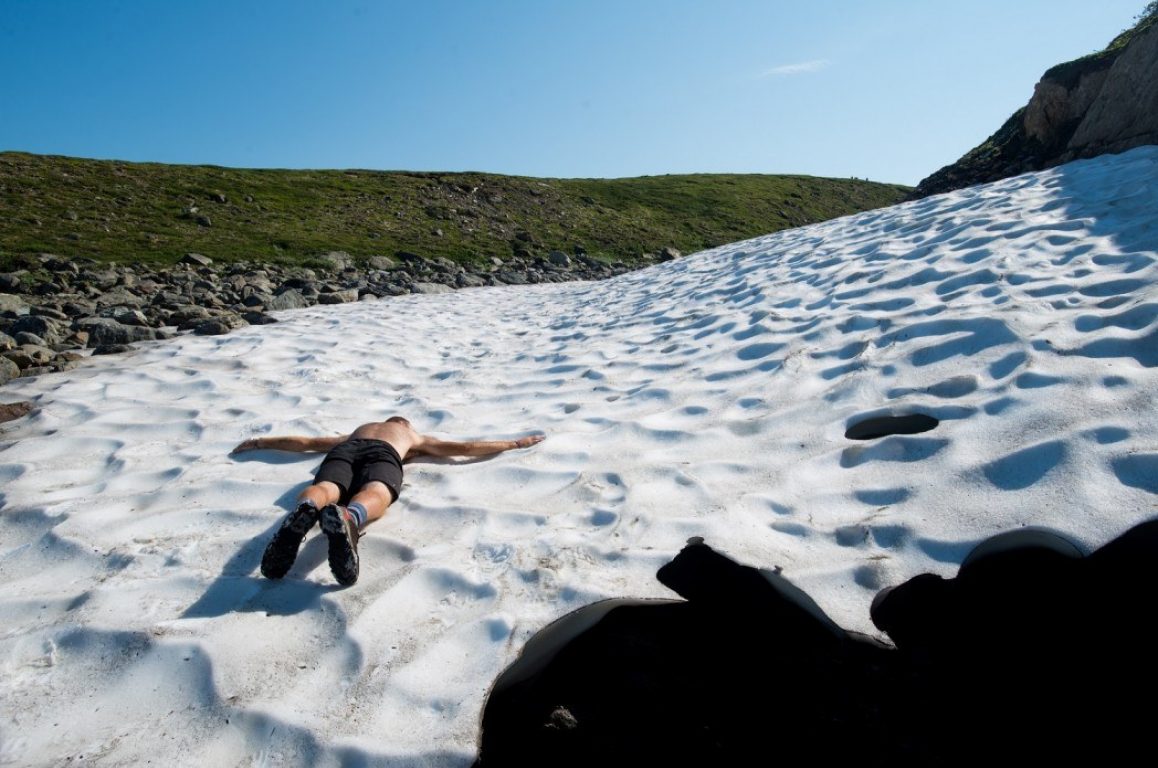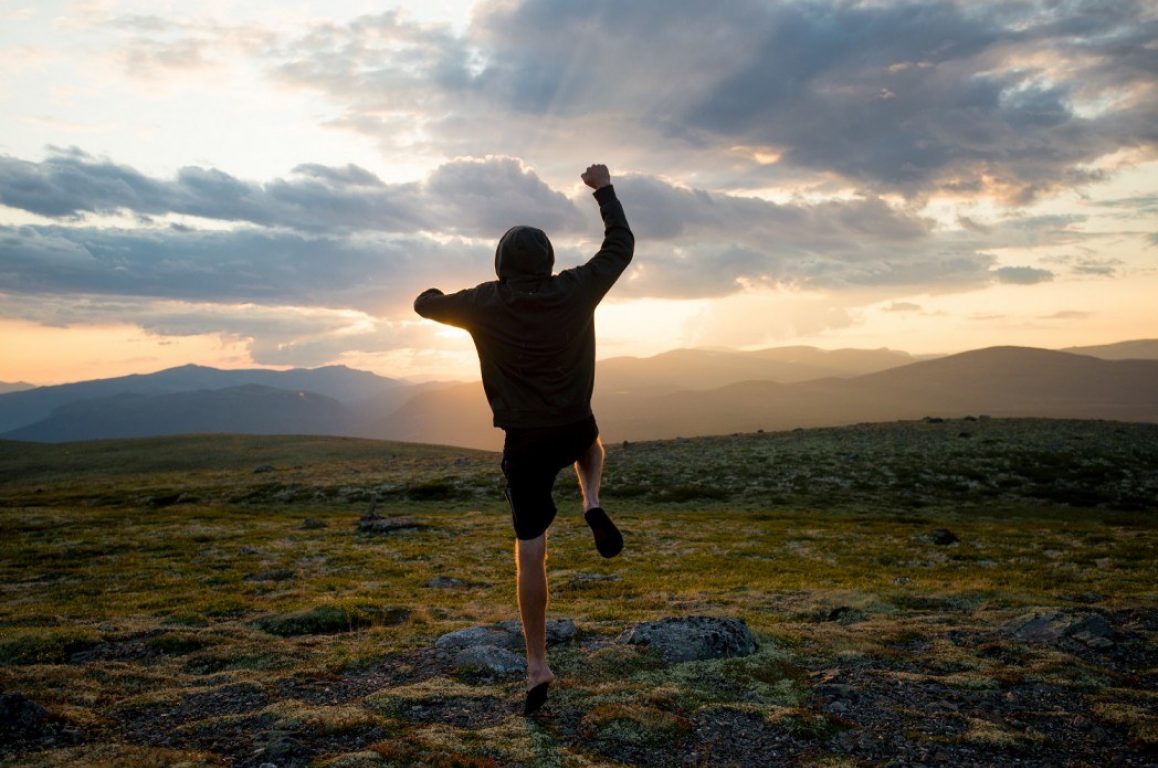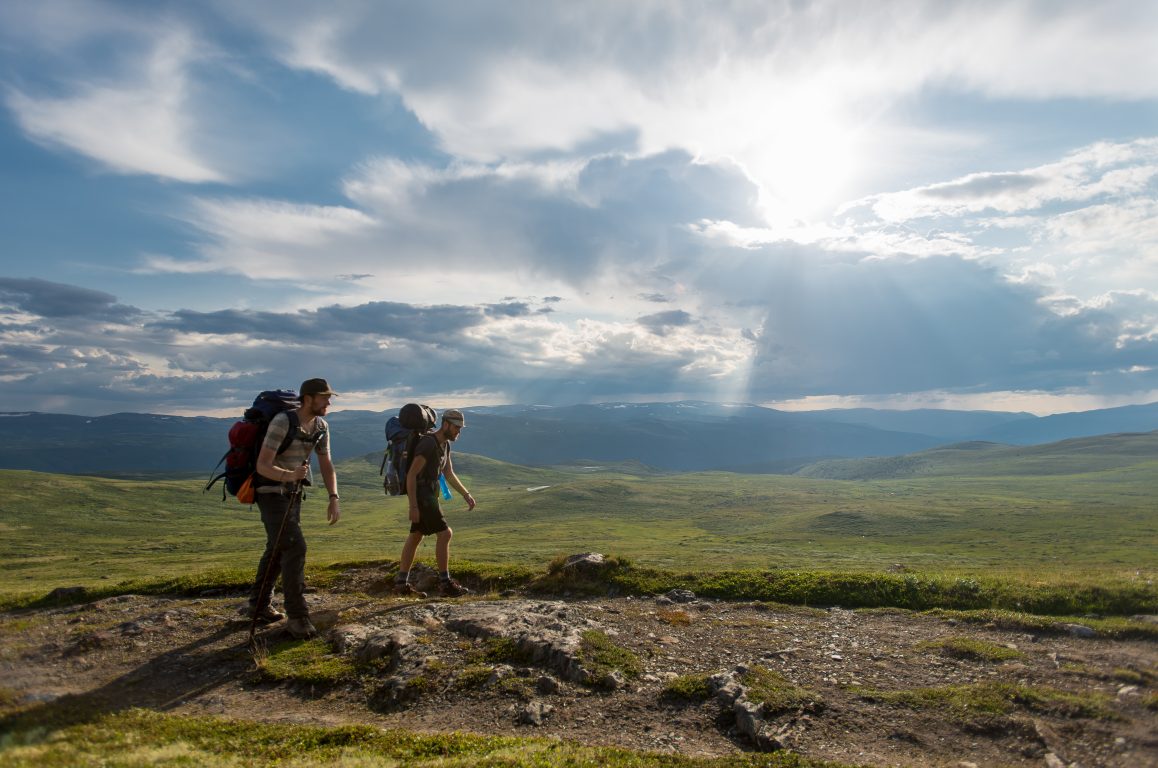Joly, Dave and Dave - adventures on a pilgrimage through Norway
Three guys embarked on a pilgrimage through the Norwegian wilderness. One of them got to experience sleeping outside in pouring rain, while another was attacked by one of Norway's smallest and most aggressive creatures.

British traveler Joly Braime visited the Nidaros Cathedral in Trondheim in 2009. There, he discovered an information board about "Pilegrimsleden"—St. Olav Ways to Trondheim—and since then, he had contemplated undertaking a pilgrimage through Norway. Many years later, he had the opportunity to take a whole month off between jobs and decided to walk the Gudbrandsdalsleden from Oslo to Trondheim.
A friend of his, British David Tett, planned to join him for two weeks of the journey, while Joly intended to walk the rest of the way alone. However, in the first days of the trip, he frequently encountered another friendly pilgrim, American David Briceland. Eventually, they decided to continue the journey together.
Joly shares their adventures and experiences during the pilgrimage to Trondheim:
What fascinated you about undertaking a pilgrimage through Norway?
"The idea of walking all day and finding a campsite when tired seemed like an adventure to me," Joly explains. "I was very eager to try living in the wilderness. The opportunity to camp freely in uncultivated land is not available in England."

Is there a difference between a pilgrimage and an ordinary hike?
"There are many enjoyable aspects to hiking, but there's something special about walking a route, and people knowing why you are there and where you're headed. They see you on the trail and recognize you as a pilgrim. Everyone in the area is familiar with Pilegrimsleden, and they all knew who we were.
When you're walking the trail with a large backpack, you appear non-threatening, making it easy to connect with people you meet. No one was afraid of us; we were three young men but were invited into the homes of elderly ladies. This would never happen in other situations, and we found this hospitality both interesting and pleasant. I haven't experienced such hospitality in the same way in the UK."
Do you think this is typical of Norwegians?
"I believe Norwegians are outdoor enthusiasts, and many are active hikers. We often received help from people along the trail. Once, during a heavy thunderstorm, we were walking with our heads down in pouring rain. Fortunately, Dave looked up and noticed a farmer waving at us from his veranda. He invited us in and served coffee, which tasted incredibly good. We sat with him for ages, and when it stopped raining, we continued walking."
Norwegians are said to be somewhat reserved and aloof. But that doesn't seem to be the case here?
"I haven't experienced that at all, quite the opposite! It was exceptionally warm this summer. One day, while walking alone in the scorching sun, a woman suddenly came running from her garden, waving a water bottle to offer me cold water. It ended with her inviting me in, and I had coffee and lunch with the whole family. Similar things happened many times."

Did you have any experiences that one wouldn't typically have on a regular hike?
"Actually, the churches along the trail were very interesting. None of us walking together are particularly religious, but we found that churches are great places to pause and take time for reflection. Whenever we passed an open church, we would go in and sit there for 10 minutes in silence. It became a sort of ritual on the journey that wouldn’t have existed if we weren’t on a pilgrimage.
The churches felt like spiritual, peaceful places. We visited many different churches, both old and new, and some amazing stave churches. In some churches, we were offered guided tours where we learned many fascinating facts."
Do you think people are more open to such experiences on a pilgrimage than in everyday life?
"On a pilgrimage, your life is reduced to the simple questions: How do I get from A to B? Where will I sleep tonight? And what will I eat? The rest of the day is worry-free and open to thoughts and positive experiences. It clears your mind and puts your life into a broader perspective."
Why do you think people start asking themselves the big questions during a pilgrimage?
"It’s almost unavoidable. You have time to think, and you find yourself pondering profound questions. You’re walking a route that people have used for hundreds of years. This gives the journey a unique, spiritual dimension.
The way you are received also plays a big role. You are immediately recognized as a pilgrim. You become part of a greater context and feel cared for in a special, almost old-fashioned way."
How do people take care of pilgrims?
"You get the sense that people living along the trail have always kept an eye out for pilgrims and ensured they find the right path. When we got lost, people would stop their cars to guide us back on track. Every time, there was someone there to help us move forward—we were invited into people’s homes, a woman at the campsite gave us some free shower tickets, or we received some milk. It’s interesting to be in this role."

Do you plan to go on a pilgrimage again?
"When you go on a big journey like this, you want to do it again. Going on a pilgrimage is like catching a bug you can’t—or don’t want to—get rid of. I think Pilegrimsleden in Norway is adventurous yet very accessible. Along the route we walked, we could buy food in many places, the signage was good, and it was never far to inhabited areas if we needed help. You don’t need much equipment. In fact, Dave, my American friend, didn’t even bring a tent!"
Sleeping outside without a tent sounds risky.
"I think it's madness. He was determined to have a real 'back-to-nature' experience. He only had a sleeping bag, a sleeping mat, and a poncho with him."
It can actually start snowing in the mountains, even during summer.
"That's exactly what I thought. He was incredibly lucky, especially on the way over Dovrefjell. We had three days of sunshine. We could see storms rolling up one valley and disappearing into another. It didn’t rain until the very last night.
Still, Dave had some rough nights on the trip. Sometimes I’d wake up to find him sitting shivering under a tree, wrapped in his poncho. I told him, 'Mate, get yourself a tent!' On the other hand, he didn’t have to carry as much as I did. He had a 50-liter backpack with a sleeping bag on top. He bounced along the trail while I trudged after him, loaded down with all my gear and food."

We’ve just been talking about tents and wilderness. Did you know there are wild animals in Norway? Wolves and bears, for example?"
"I did a bit of research beforehand to make sure that wolves and bears were in other parts of the country. The only wild animals I had trouble with were lemmings."
Of all the wild animals in Norway, you had trouble with lemmings?
"I assume they were lemmings— they looked like small, brown and yellow hamsters. Lemmings are very aggressive animals. One night, I must have camped right next to their nest. In the middle of the night, I was suddenly attacked. It was all absurd. They were sitting on their hind legs in my tent vestibule, squeaking and getting worked up, running back and forth under the bottom of the tent. At first, I tried to sleep through it, but eventually, I had to give up—it got too noisy. It’s the strangest thing I’ve ever experienced."
Lemmings aren’t very big, are they?
"They’re tiny. I lost the battle against one of the smallest animals in Norway. Sometimes we’d see them on the trail. They’d sit on their hind legs and wave their paws at us.

People often talk about life-changing experiences on a pilgrimage. Were you at life stages where you needed to ask some of the big questions?
"All three of us spent a lot of time planning and dreaming about our futures. We were all at interesting points in life. I had just moved from London, where I had lived for many years, and relocated up north to become more independent.
My friend Dave had reached a point in his relationship where he had to decide whether to marry or not (of course, he couldn’t admit it at the time, but shortly after the trip, he was engaged, so he must have had it on his mind).
Dave, my American friend, was moving back to Michigan to figure out what kind of life he could build there after having lived in Russia and Spain as a teacher. We had a lot of big questions, and we spent a lot of time talking about the future.
How did it feel to reach your goal in Trondheim?
"It was fantastic, and the timing was perfect. As we walked into Trondheim, we arrived just in time for "Olavsfestdagene", the celebration of Olsok, which marks the day Saint Olav fell in the Battle of Stiklestad. There was a medieval market at the cathedral square, and it felt like we had walked straight into the Middle Ages.
The entire journey had been so peaceful and quiet, and suddenly we were in a bustling city. Trondheim is a beautiful city, and Nidaros Cathedral is impressive. We were almost immediately spotted by a pilgrim priest. He came over and said, 'Are you pilgrims who’ve just arrived? Congratulations!' We felt like heroes. You really get the sense that you’ve accomplished something big.
At the pilgrim center, we were also warmly welcomed. That’s how it was at all the pilgrim centers along the way. Everyone is happy to see you; you sit down, have a cup of coffee, and exchange a few stories. We really enjoyed it. In Voll, Rennebu, they even had waffles, jam, and cream waiting for us. Being received like that makes you feel a bit like a celebrity."

Was it difficult to get back to everyday life after the pilgrimage?
"Absolutely. We arrived in Trondheim, celebrated for the evening, and then I flew home the next day. The day after, when everything was washed, my clothes were hanging on the line in the backyard, and my shoes were polished and back in the closet, I thought: I have nowhere to go today! You get so used to covering a stretch of the journey every day that it feels strange to stop doing that."
What did you like most about the trip?
"The freedom you have with a tent is wonderful. You don’t have to plan your accommodations ahead of time. For example, we didn’t know what day we would arrive in Trondheim until three days before we got there. Additionally, the long summer days with light evenings are so relaxing. Every now and then, we’d take a nap by a cemetery after a lunch break, or read a book in the shade while the evening sun was high. There were many nice swimming spots along the trail, and we stopped several times to swim.
There are plenty of grocery stores along the Gudbrandsdalen trail, but it's also possible to sleep indoors in hostels and other places if you prefer. We also found that the signage was great, and the way we did the pilgrimage offered a nice combination of the freedom we wanted and the infrastructure we needed."
Would you like to go on a pilgrimage? Start planning in the trip planner, where you’ll find maps of all nine trails in Norway, along with information about accommodations and points of interest.
The photos were taken by David Tett, a professional photographer based in London. You can find more images from the trip on his website.